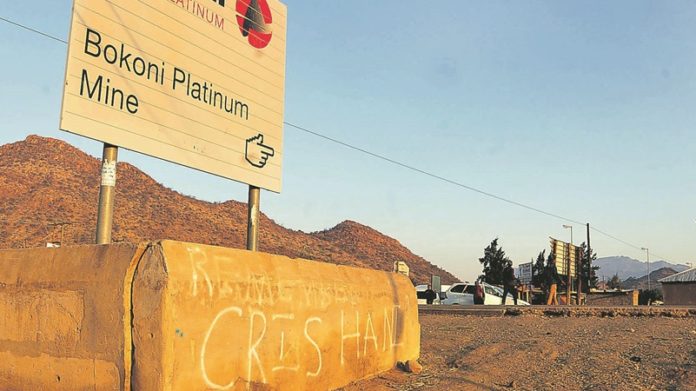
ANGLO American Platinum (Amplats) said the way had been made clear to sell Bokoni Platinum Mines, the platinum group metal (PGM) mines situated in the Limpopo province, in the north-west region of South Africa’s Bushveld Complex.
“The intention remains to exit AAP’s interest in Bokoni,” said Jana Marais, spokeswoman for Amplats in an e-mailed statement. “AAP has engaged independent experts to complete a mine, process and infrastructure study in support of a new mine design in support of the commencement of the disposal process,” she said.
This followed conclusion of the sale for R300m of the Kwanda North and Central Block mineral deposits by Atlatsa Resources, the company that has a 51% stake in Bokoni Platinum Mines, to Amplats.
Amplats announced the mineral sales transaction in 2017, roughly ten years after it first established the joint venture with Atlatsa Resources, once a Toronto-listed company (it announced its delisting in December). After years of attempting to make sustainable returns from Bokoni Mines – once known as Lebowa Platinum when it was sold for R3.6bn in 2007 to Anooraq Resources – it wrote down the total investment for about R4.8bn.
“The debt forgiveness as part of the Kwanda and Central transaction will result in a mine being debt free which should allow the acquiror greater possibility of obtaining the necessary funding that would be required to pursue restarting of the mine,” said Marais.
Quite whether there’s anyone left interested in either buying the mine, or funding it, remains a moot question. It was twice revalued whilst Amplats was involved in it, the first in 2008 only a few years after establishing the joint venture with Atlatsa. Amplats has also refinanced the mine on several occasions.
The first major financial surgery was in 2015 in which a third of the initial 6,342 people employed at Bokoni Mines cut from the payroll. That was followed in 2016 by a decision to place on care and maintenance the Klipfontein opencast section and delay the ramp-up of the mine’s Brakfontein Merensky and Middlepunt Hill UG2 shaft.
By the middle of 2017, however, the mine had lost another R500m, hastening the end now captured in the exploration rights sales announced this week. Even in the current PGM market, where the elevated prices for palladium and rhodium are putting a spring in the step of most PGM producing equities, there’s little appetite for a new platinum mine which needs a complete makeover.
Moreover, the Kwanda North and Central Block prospecting rights will be absorbed in to the Mogalakwena mining right, a mine that Amplats is giving serious though to expanding, assuming market and mine economics stack up.
The market has moved on from when Bokoni Mines was mothballed. Mogalakwena is poised to supply new metal to the market from a competitive, mechanised mine whilst Impala Platinum is shutting its loss-making Rustenburg mines.
Lonmin has been sold with its assets to be moulded into the homogenity that Sibanye-Stillwater’s Marikana shafts will endeavour to become.
Bokoni Platinum Mines was an exhausting process for Amplats; even as Lebowa Platinum, the assets were problematic. Its care and maintenance plan is of course problematic to the Limpopo community there, situated near Atok, some 90 kilometres from Pholokwane. As such, the mine provided one of the few sources of livelihood in the area.
Amplats said it was delivering on its social and labour plans since the Bokoni Platinum Mine was placed on care and maintenance.
However, as the UK group’s CEO Mark Cutifani commented in an address to the Gordon Institute of Business Science in 2015: “The rough reality is that if a BEE business is failing, maybe it should be allowed to fail. If we prop up those that can’t be successful, we do those who can be [successful] a disservice.”








